Today we're revisiting a mid-range GPU battle between the Radeon RX 570 4GB and GeForce GTX 1060 3GB. It's been a little over a year since we compared these two head to head in an extensive 28 game battle, so we thought it was about time to take another look now that GPU prices seem to be coming back down to more reasonable prices.
Since the original comparison we've received multiple driver and game updates as well as quite a few new games which we've added to the benchmark list. Of the 27 games we'll be testing, just half a dozen of them were featured in last year's battle.
Last time the Radeon RX 570 was a mere 2% slower on average, so a very even fight. Currently the RX 570 costs ~$10 more than the 3GB version of the GTX 1060 – even though its reference cost is $170, while the GTX 1060 should be about $200. Today though the 1060 starts at $230 while the 570 starts at $240, so like all graphics cards they were better priced a year ago.
Representing the green team is the MSI GeForce GTX 1060 Gaming X 3G and for the red team the MSI Radeon RX 570 Gaming X 4G. Although both models are pretty heavily overclocked out of the box, we're still going to squeeze every last bit of performance from them with a custom overclock.w
Stock the RX 570 Gaming X comes clocked at 1281 MHz for the core and 1750 MHz for the GDDR5 memory. We were only able to increase the core clock to 1435 MHz, a 12% core overclock and the memory to 1900 MHz, a 9% overclock.
As for the GTX 1060 Gaming X 3G, it comes with a base core clock of 1569 MHz for and 2002 MHz for the GDDR5 memory. We were able to hit 1770 MHz for the core and this resulted in a boost frequency of about 2150 MHz depending on load. The memory also reached 2275 MHz, so a 13% core overclock and a 14% memory overclock.
As mentioned earlier we have 27 games in total, all of which have been tested at 1080p using both the stock and overclocked configurations. As usual our Corsair GPU test rig built in the Crystal Series 570X has been used and inside we have an i7-8700K clocked at 5 GHz with 32GB of DDR4-3200 memory. We realize this hardware configuration is overkill for these GPUs, but the idea here is to remove any potential system bottlenecks that might mask GPU throughput. Now let's get to the good stuff...
Benchmarks
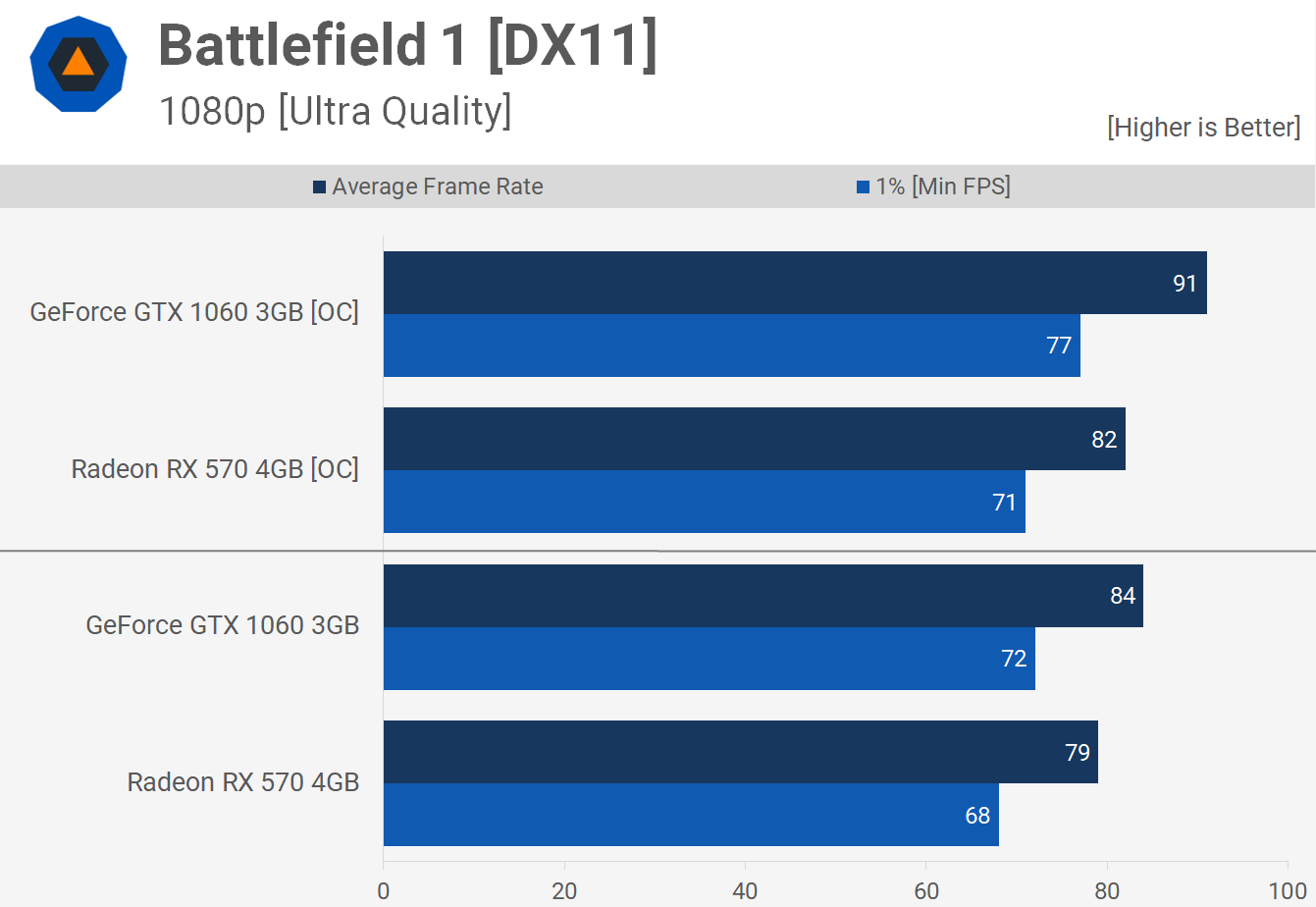
First up we have the Battlefield 1 results and here the GTX 1060 was 6% faster out of the box and 11% faster once overclocked. So a clear win here for Nvidia but it has to be said the RX 570 still puts on a show, delivering well over 60 fps at 1080p using the maximum in-game quality settings.
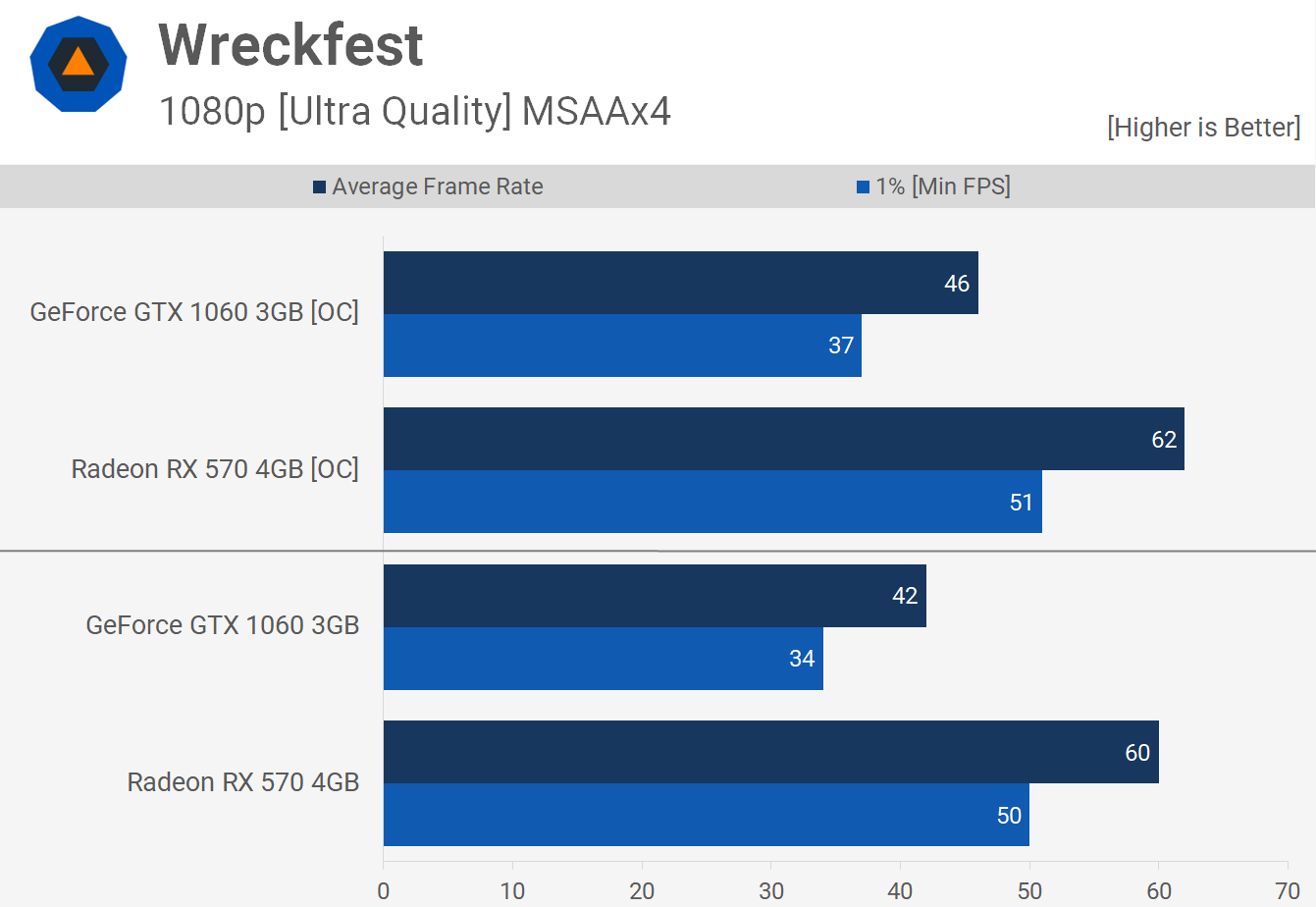
Unfortunately Nvidia still hasn't addressed their underwhelming Wreckfest performance, allowing AMD to rear end them in brutal fashion as the RX 570 provides up to 47% more performance. More critically the RX 560 averaged 60 fps out of the box, whereas the GTX 1060 3GB struggled to break the 40 fps barrier.

Tom Clancy's Rainbow Six Siege is another title that really favours the red team, here the RX 570 beat the GTX 1060 by a 36% margin out of the box though Nvidia was able to reduce that to a 27% margin in favour of the RX 570 once both GPUs were overclocked.
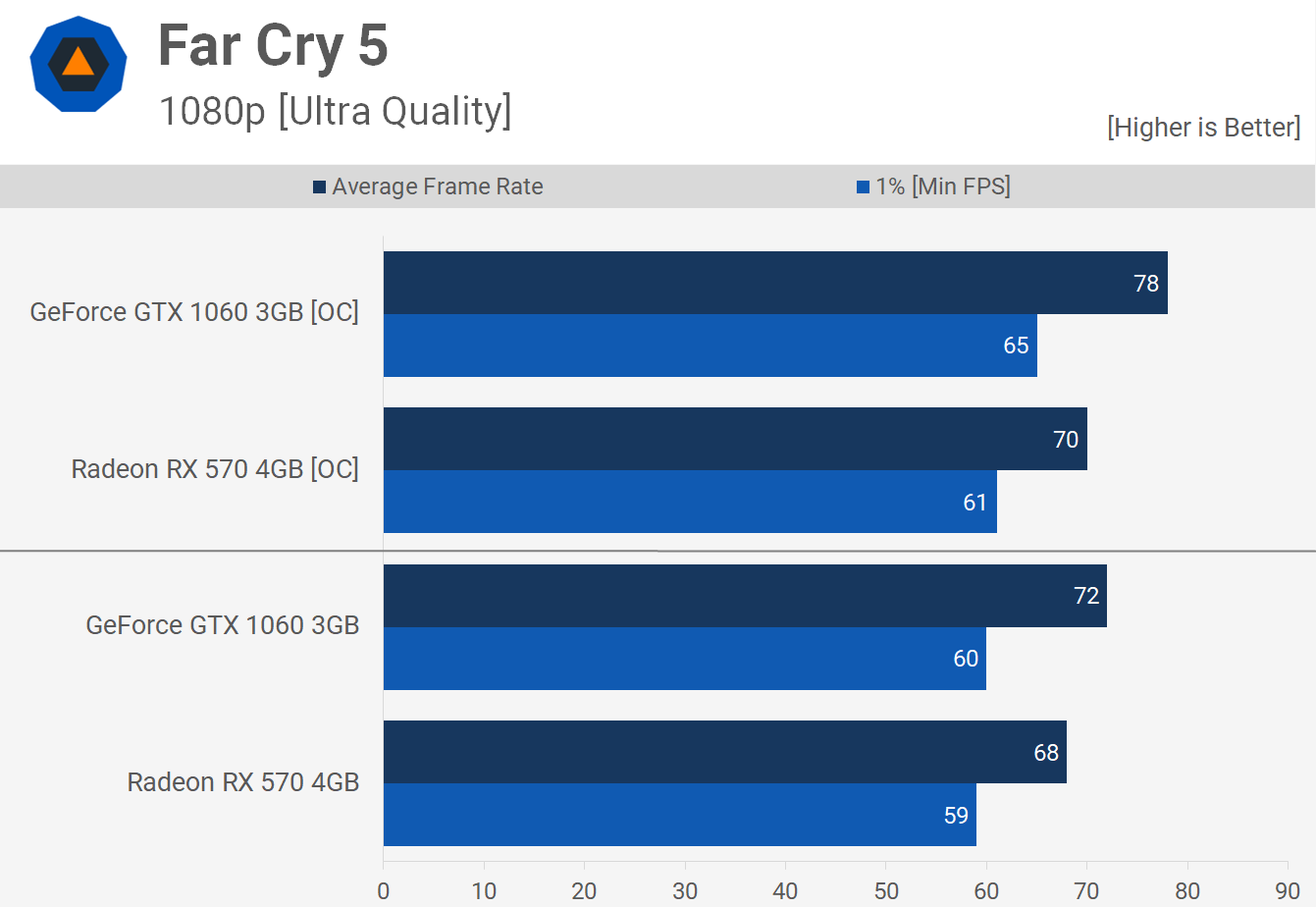
Although Far Cry 5 is an AMD sponsored title we saw little to no bias upon release, both Radeon and GeForce GPUs performed as expected. Here we see the GTX 1060 3GB is slightly faster than the RX 570 out of the box and 11% faster once overclocked.
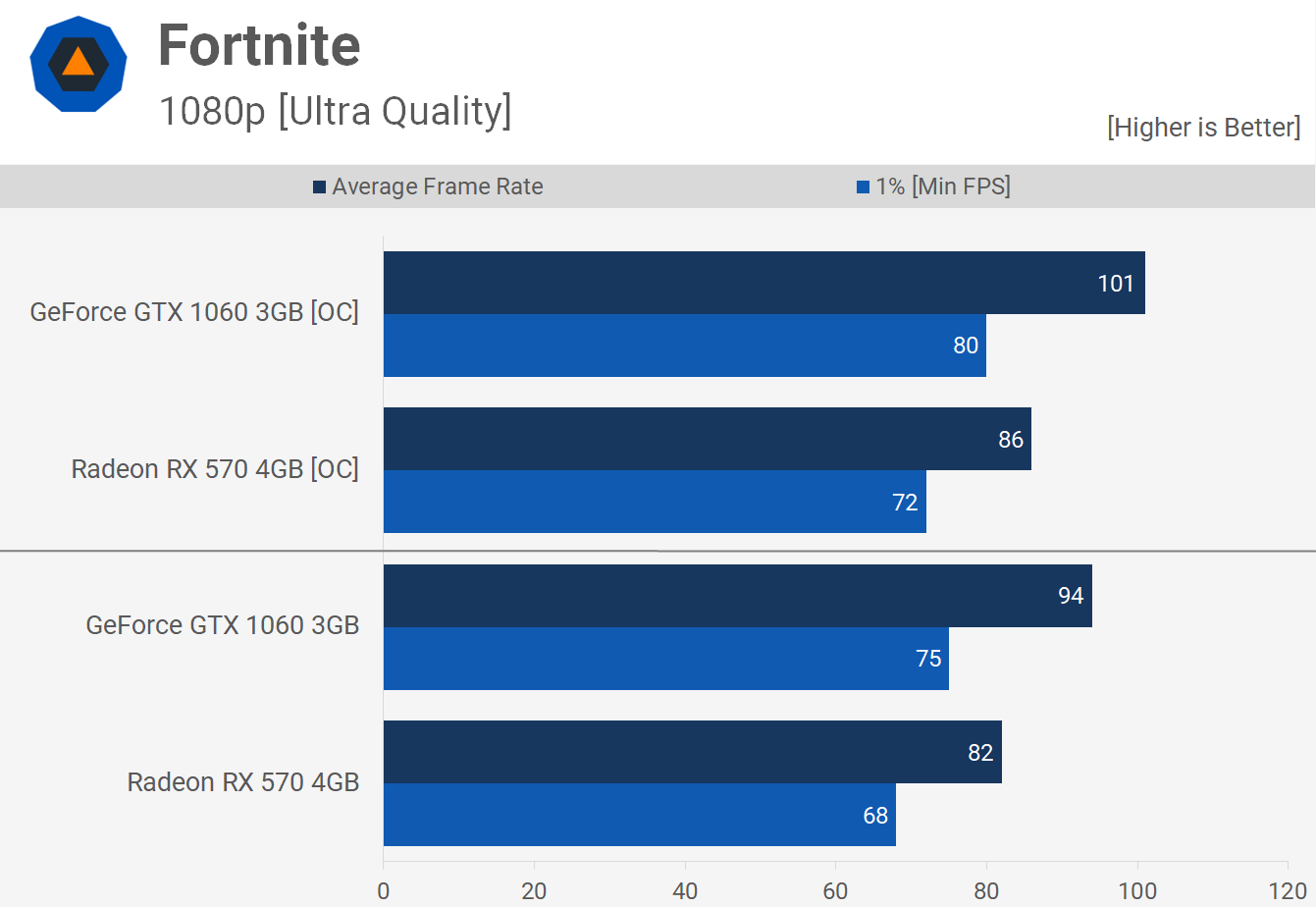
Fortnite is built upon the Unreal Engine 4 and therefore has a natural tendency to favour hardware from the green team. Here we see the GTX 1060 providing 15% more performance stock and 17% more once overclocked. Still it's worth keeping in mind that we are using the maximum in game quality settings at 1080p and still seeing well over 60 fps at all times using the RX 570.

Total War Saga: Thrones of Britannia is a newly released title that plays well on both AMD and Nvidia hardware. That said the GTX 1060 3GB has a reasonable performance advantage as it provided 11% more frames out of the box and 16% more once overclocked. Still there was no shortage of frames at 1080p using either GPU.

AMD's ARMA 3 performance has improved out of sight in the past year and although the RX 570 was slower than the GTX 1060 3GB, it was only 7% slower out of the box and provided well over 60 fps at all times.
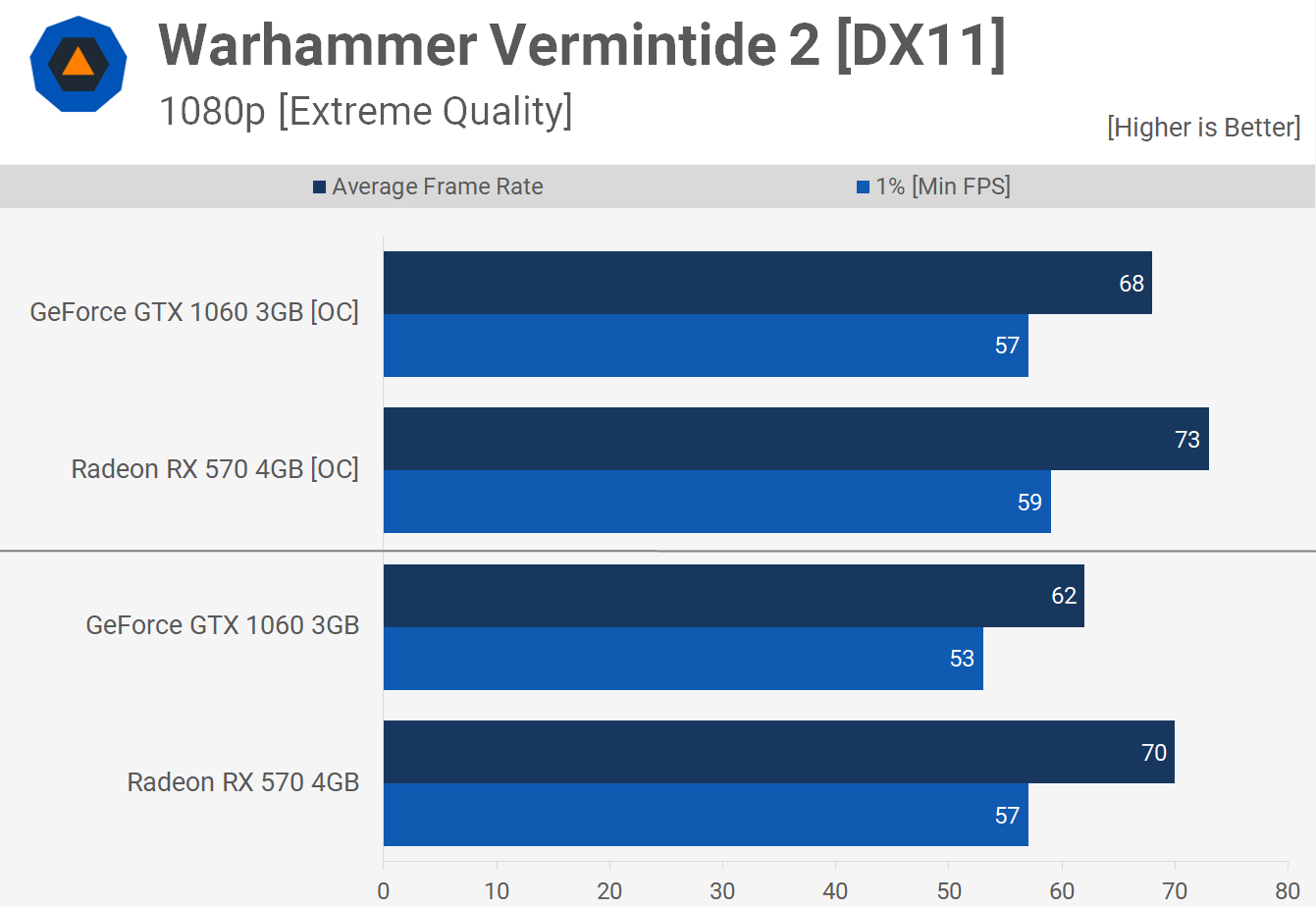
The last game we're going to look at is Warhammer Vermintide 2 and this is another title that plays nicely with AMD hardware. Here the RX 570 spat out 70 fps on average out of the box and that made it 13% faster than the GTX 1060 3GB.

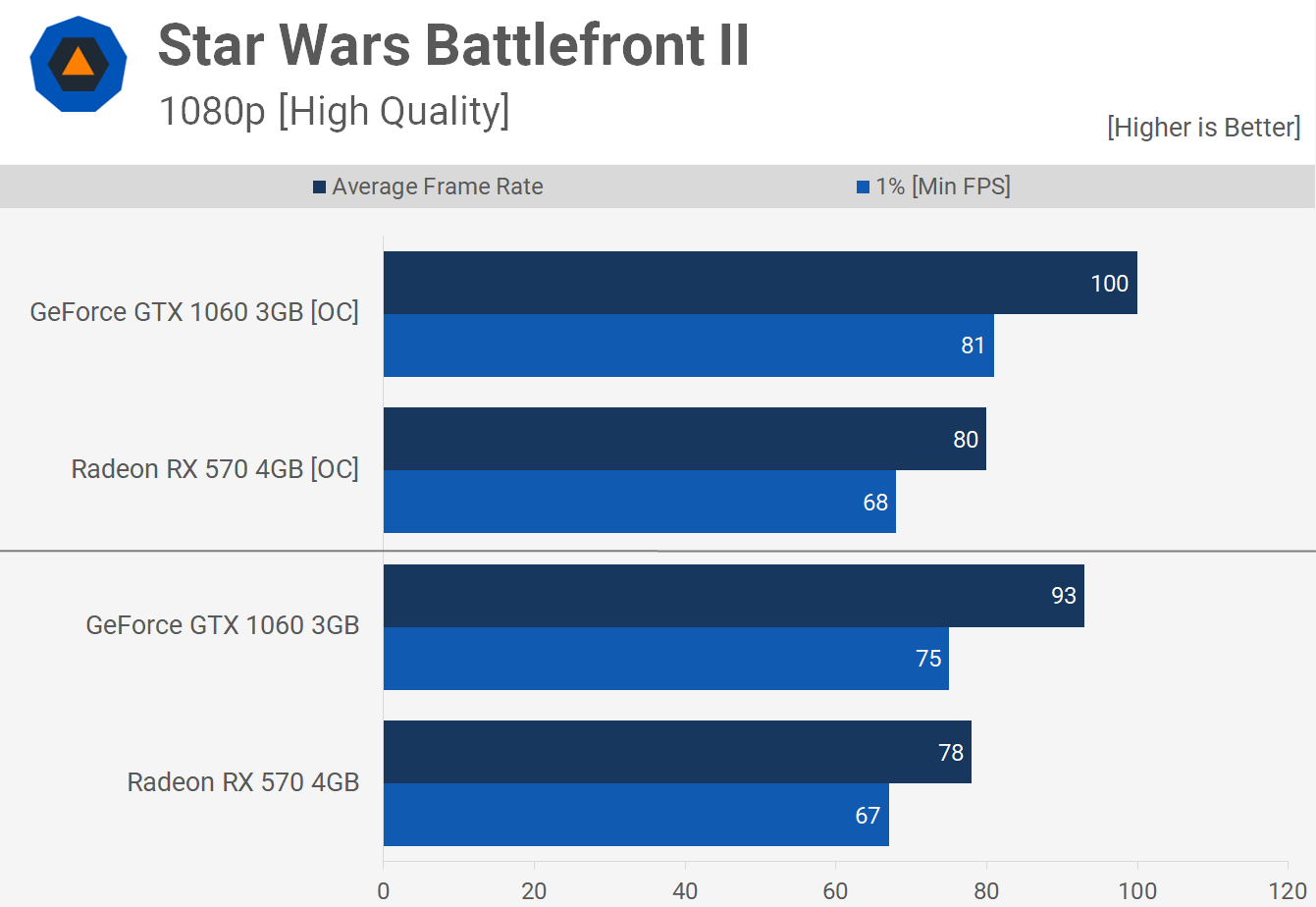
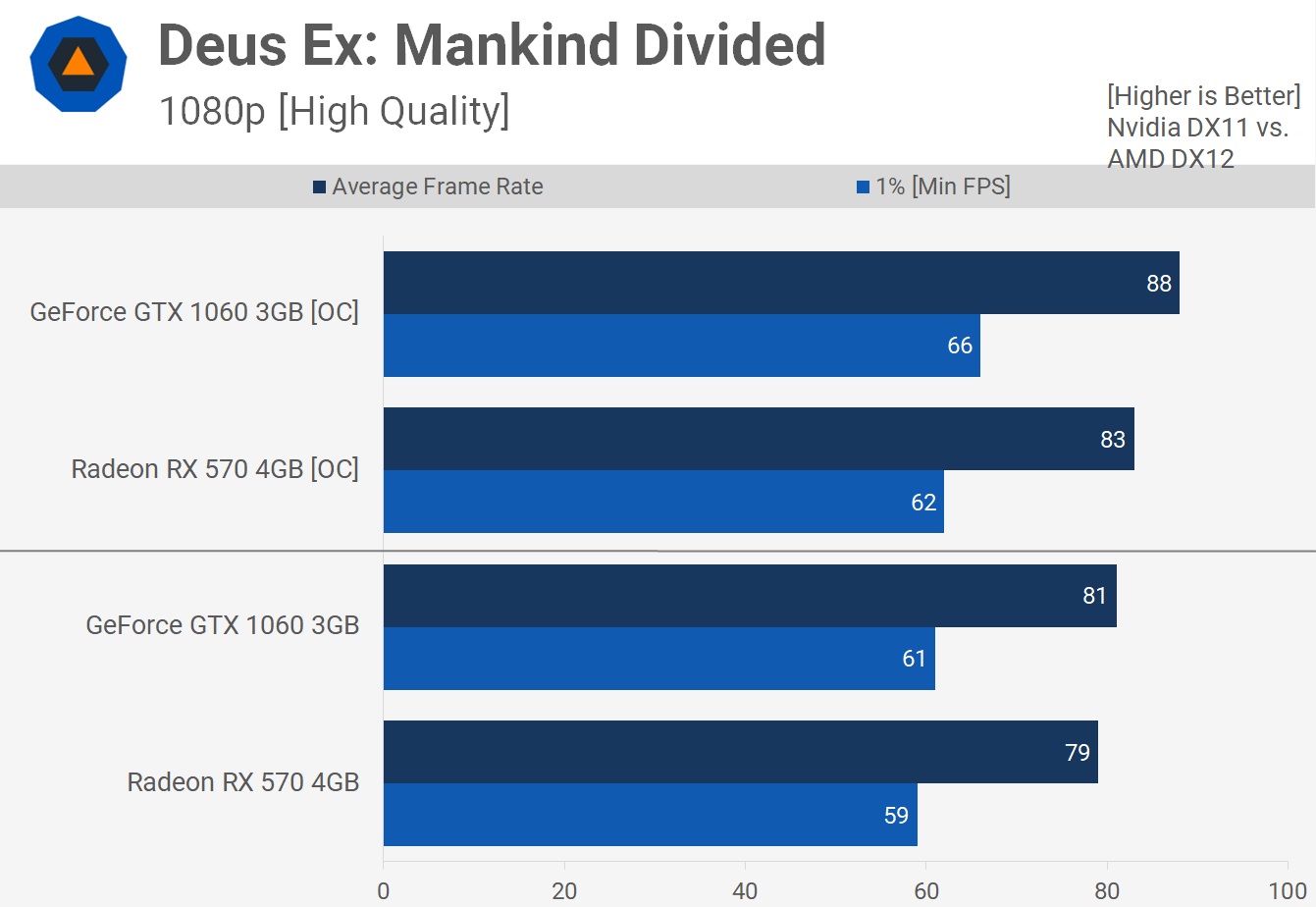
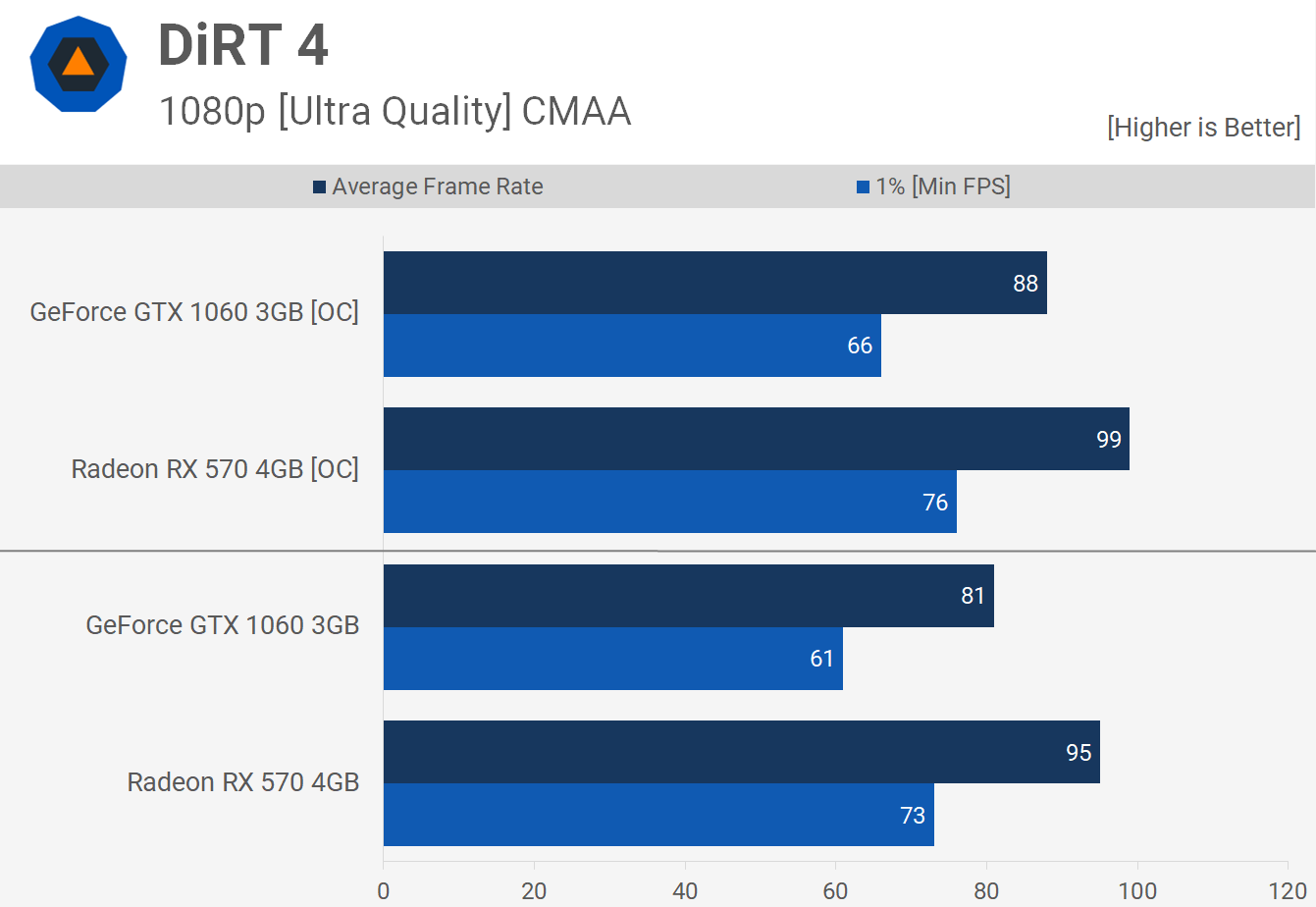

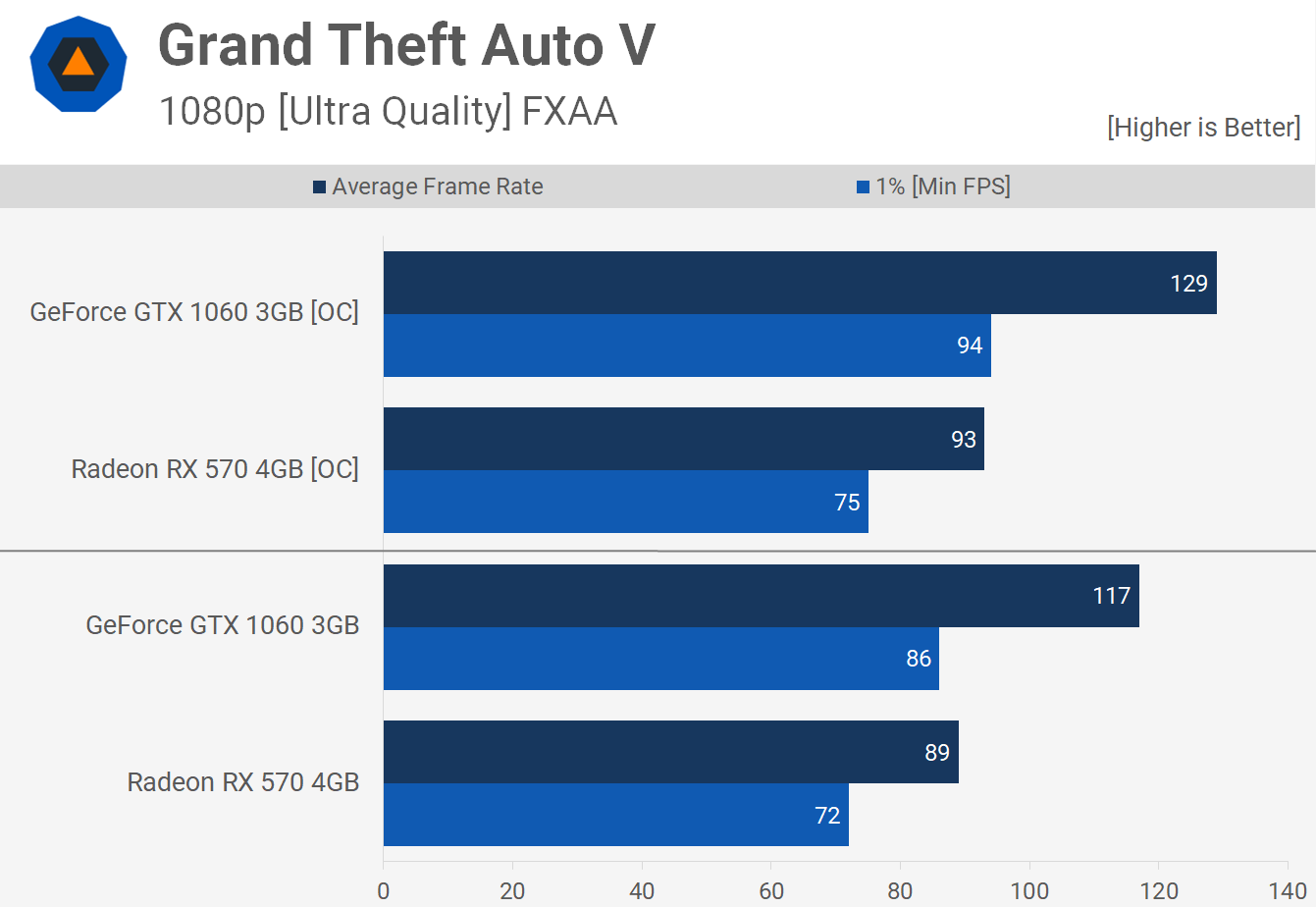

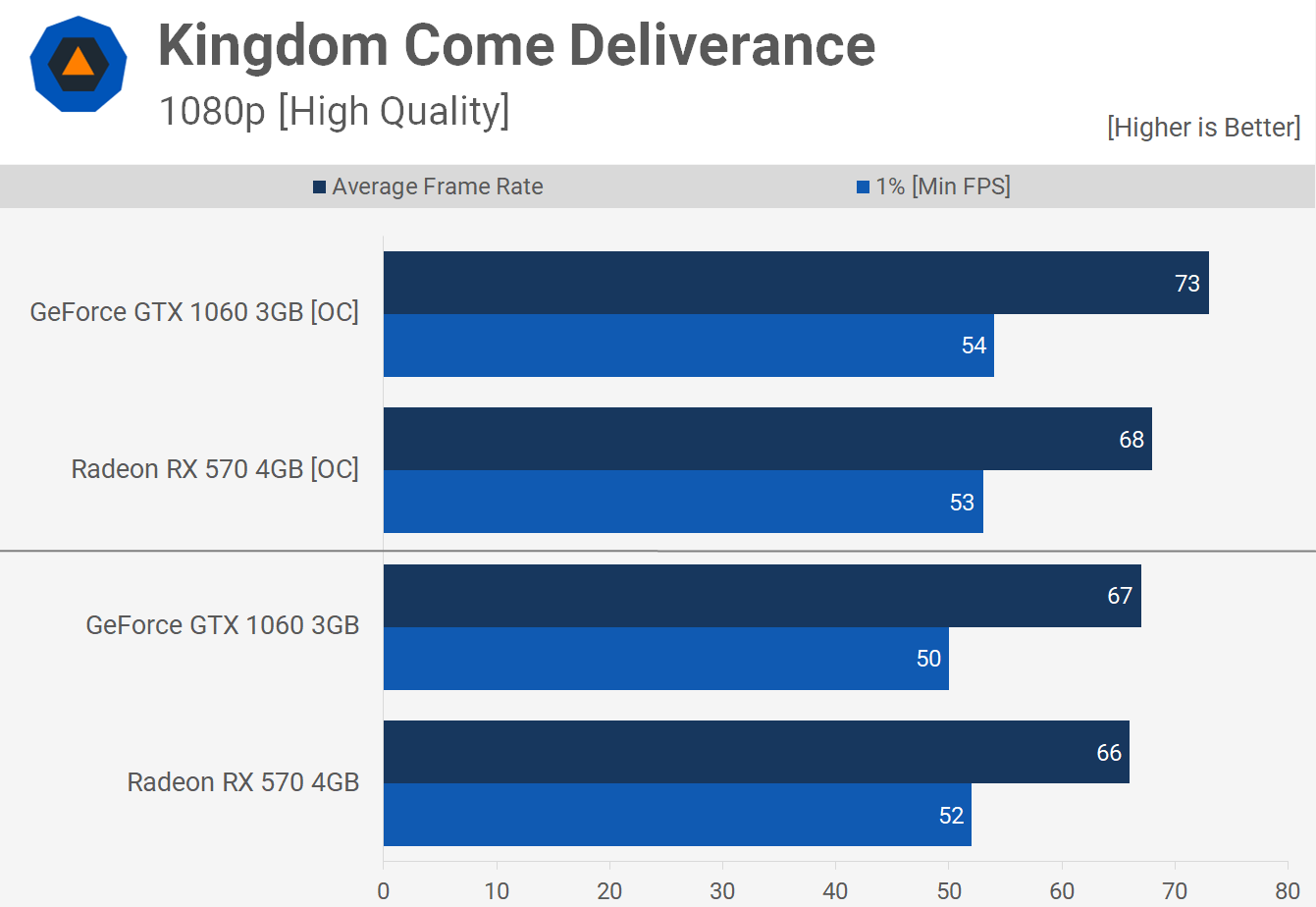
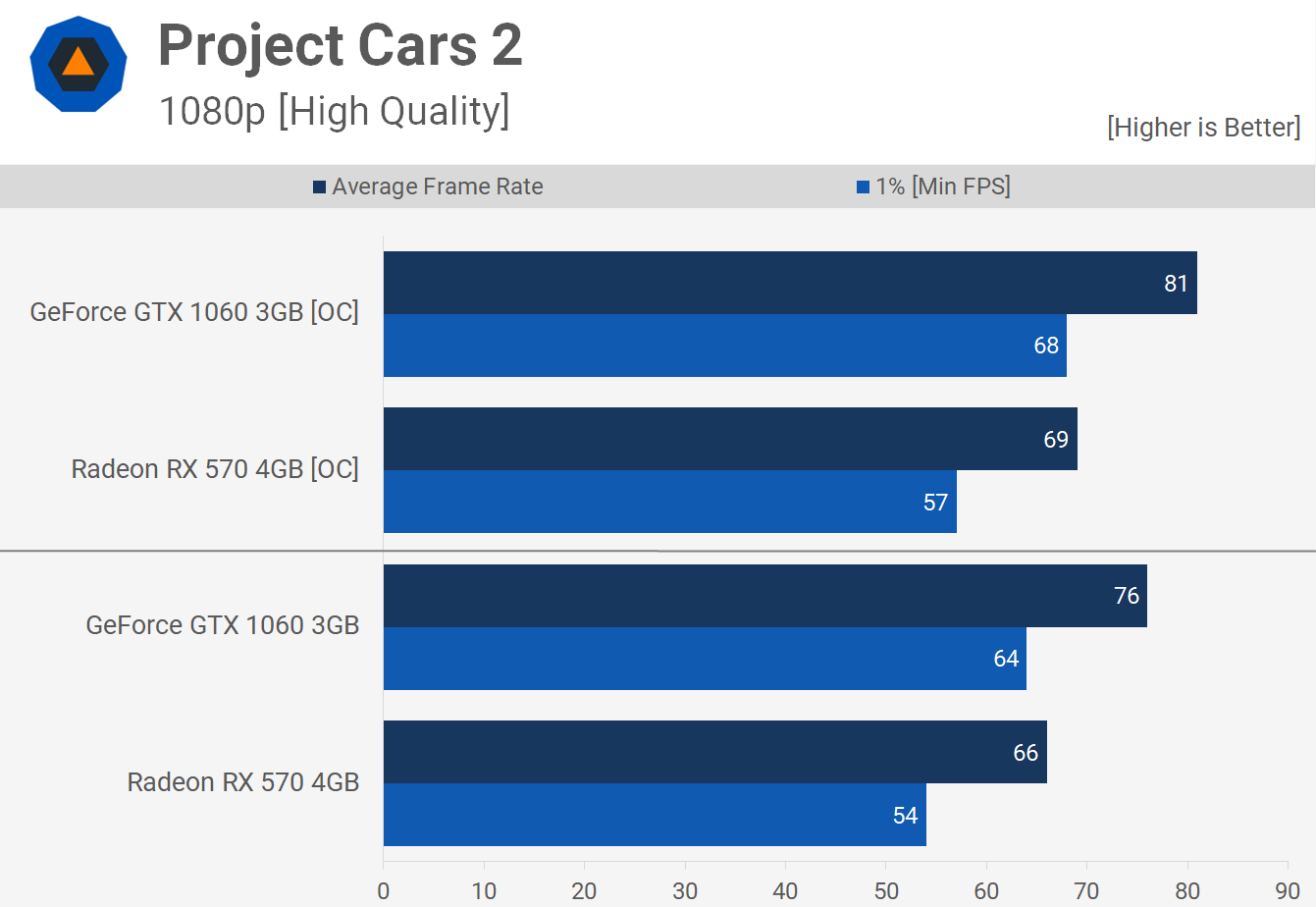
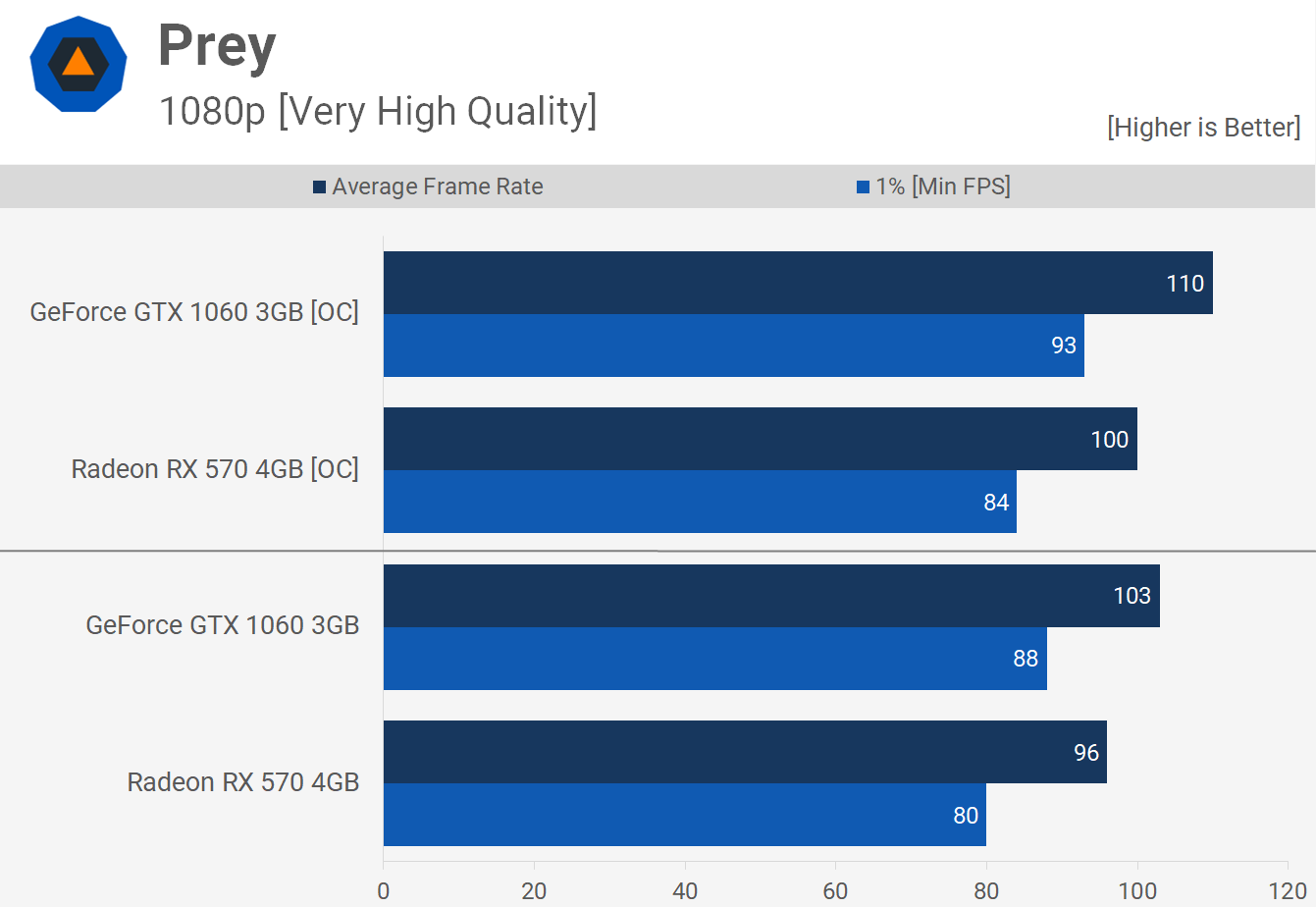
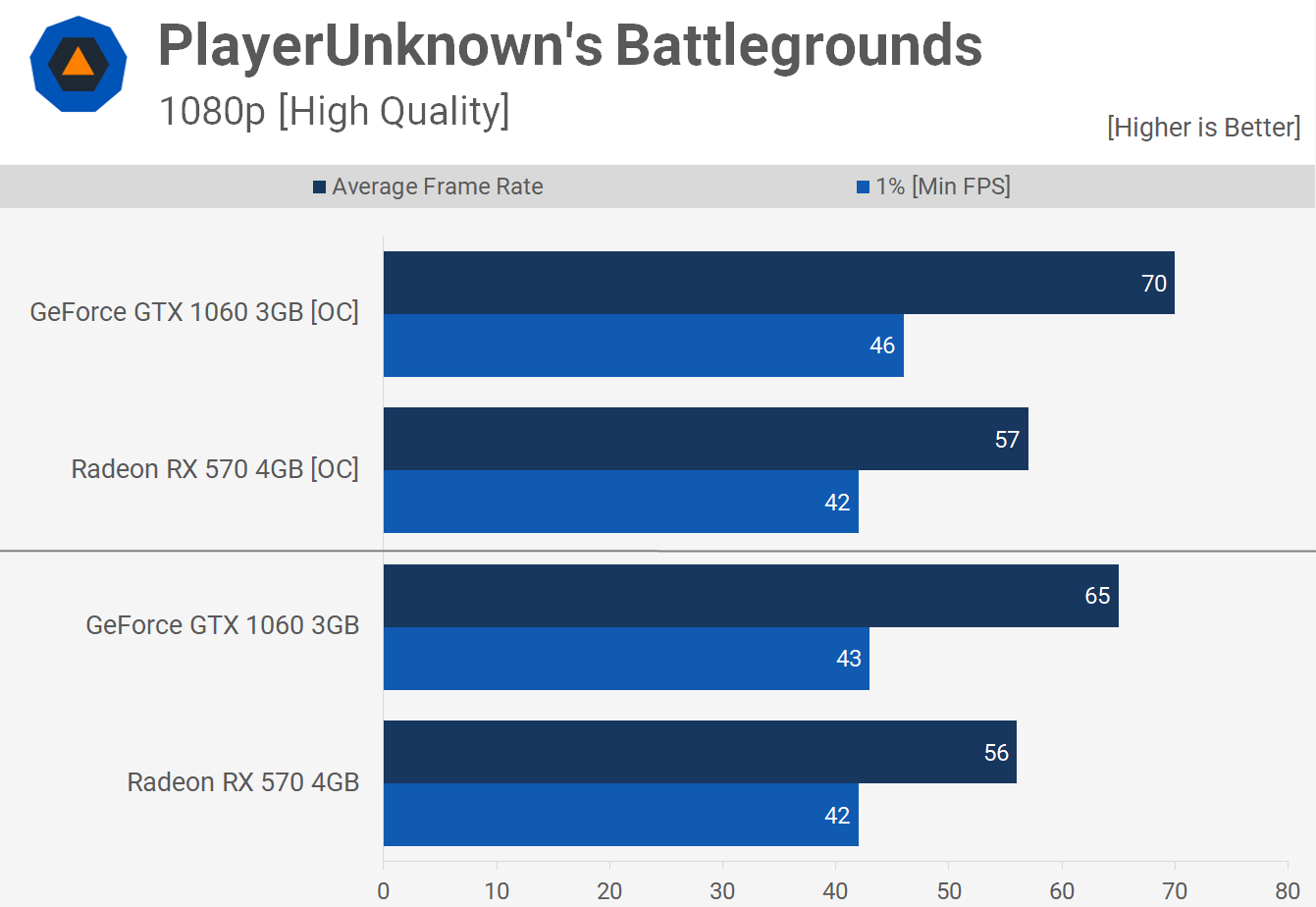
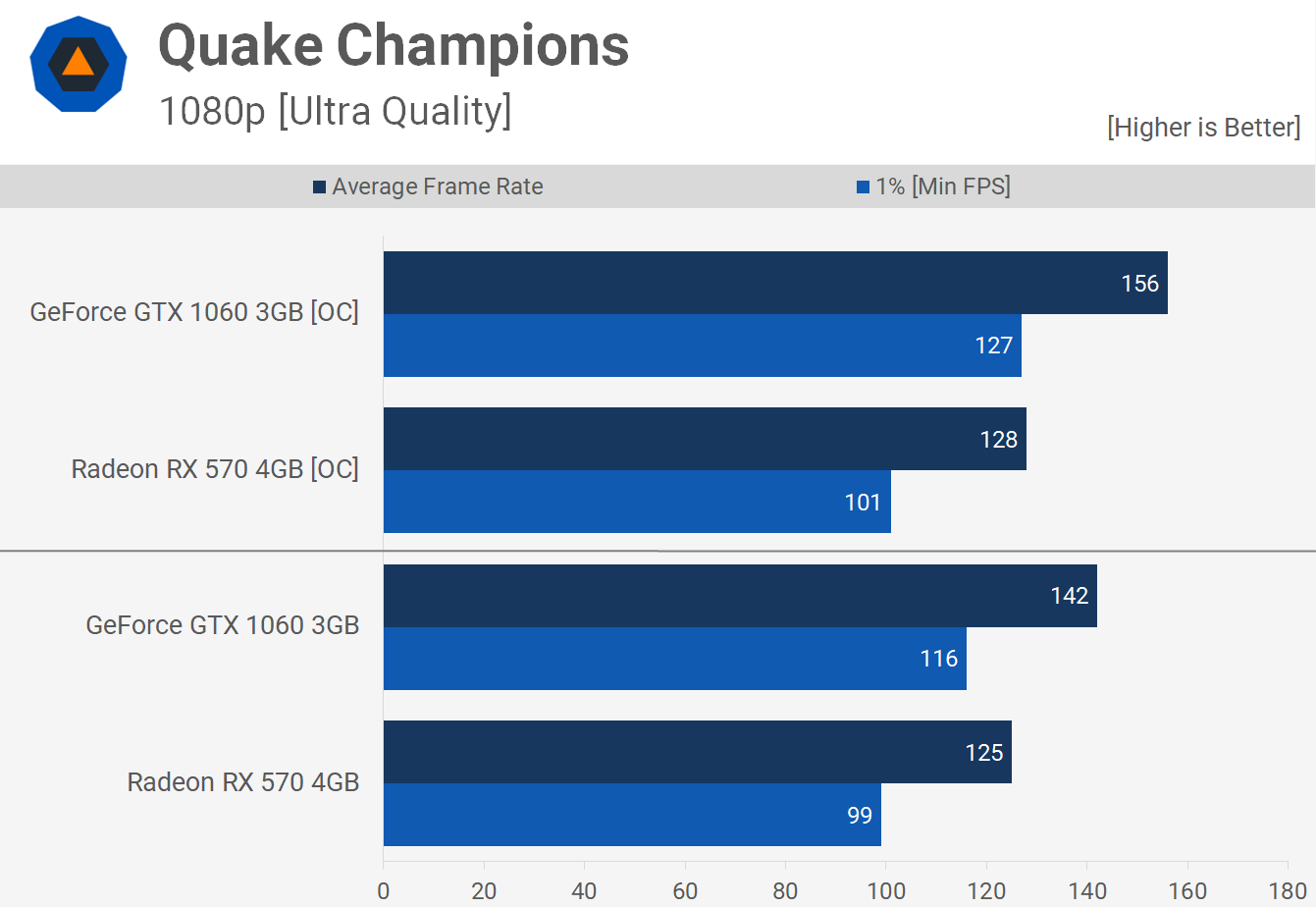

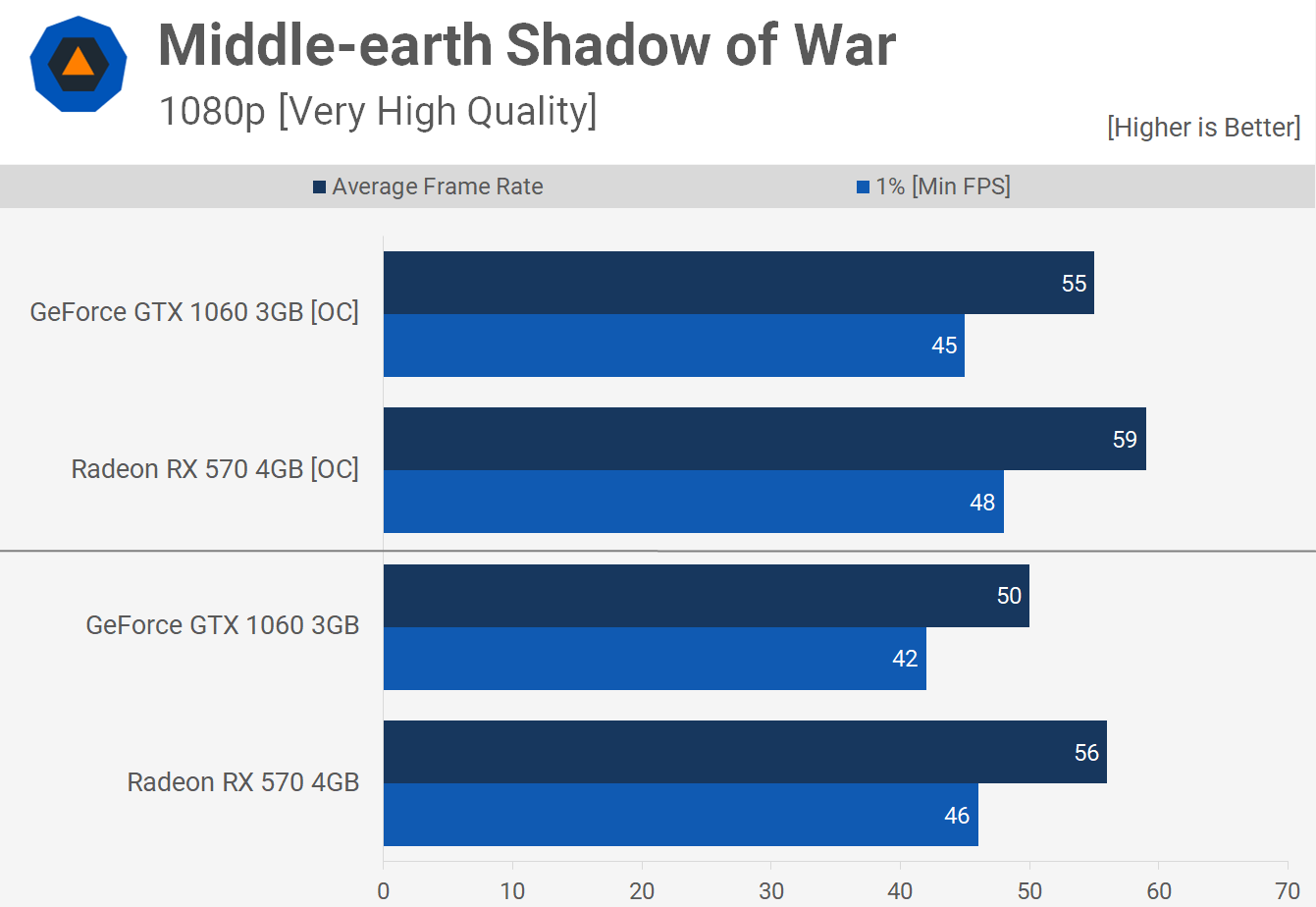
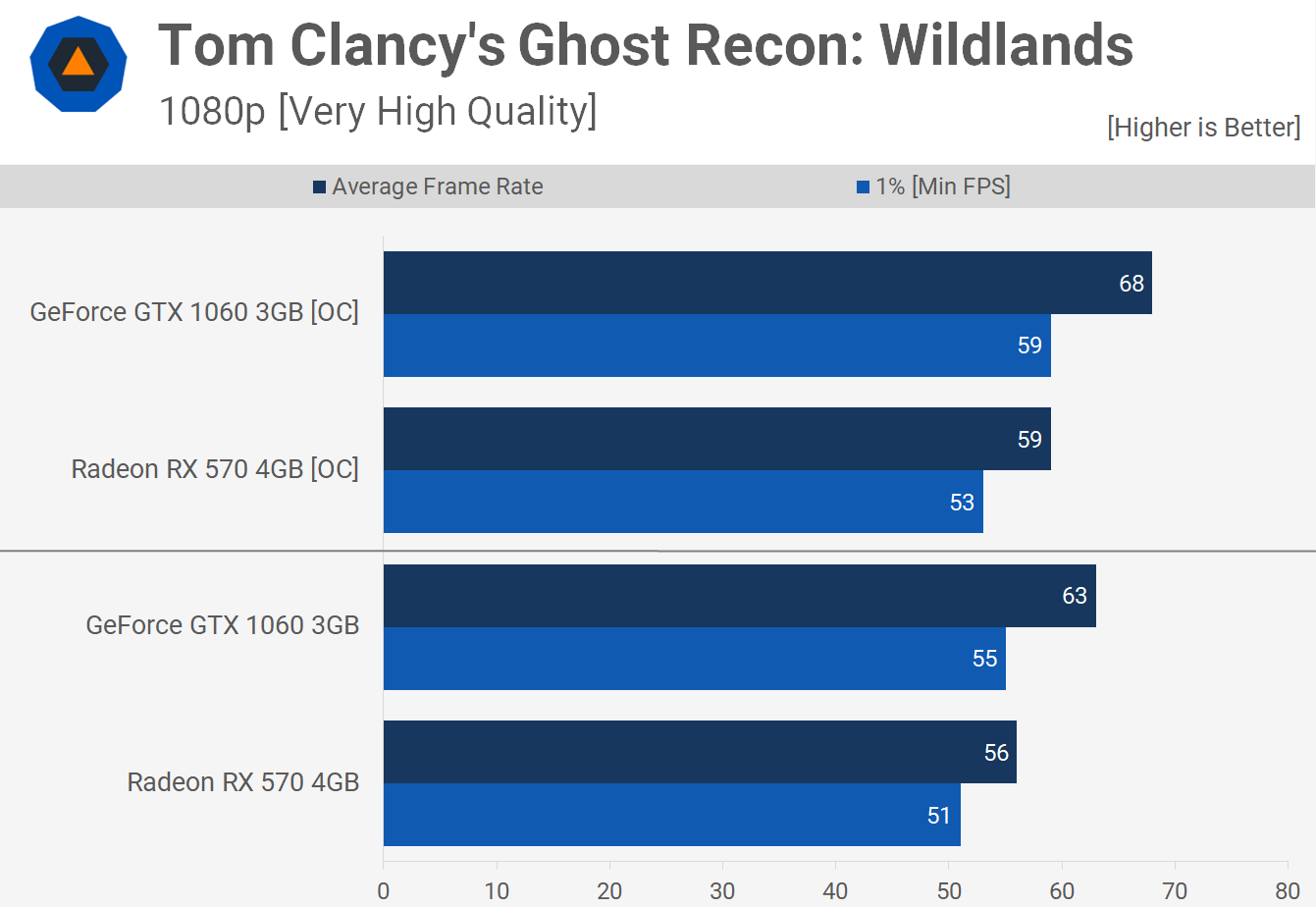
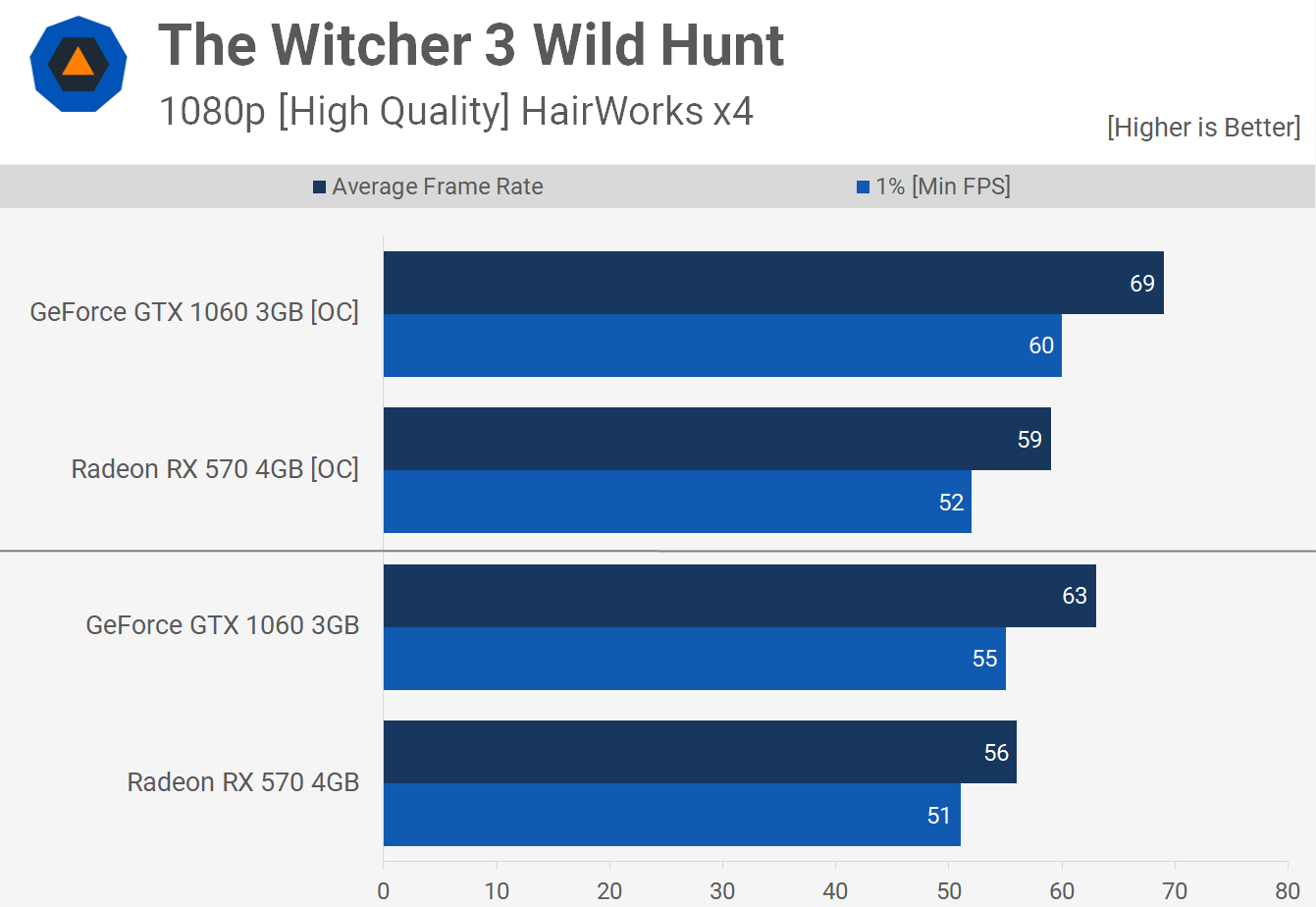
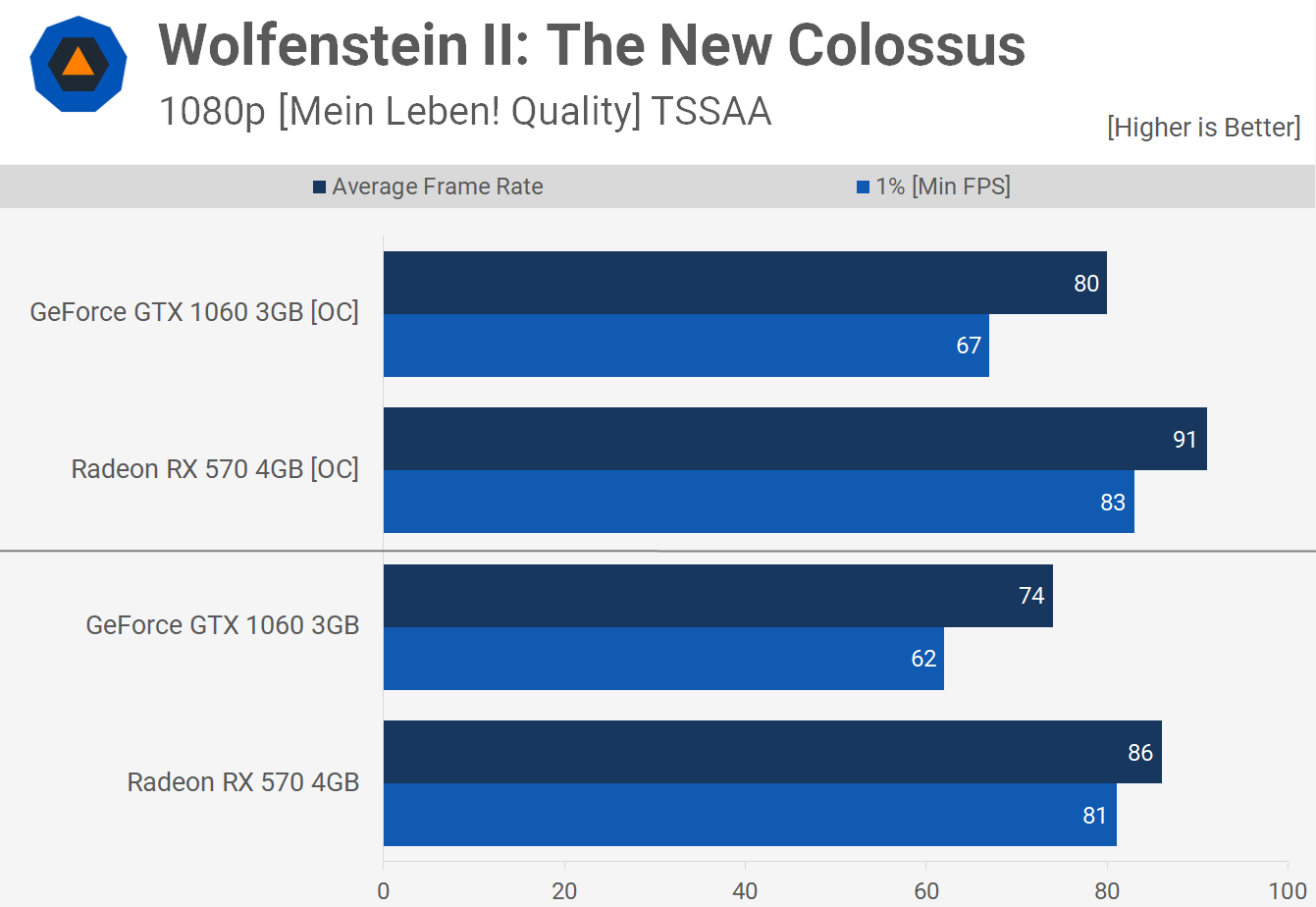
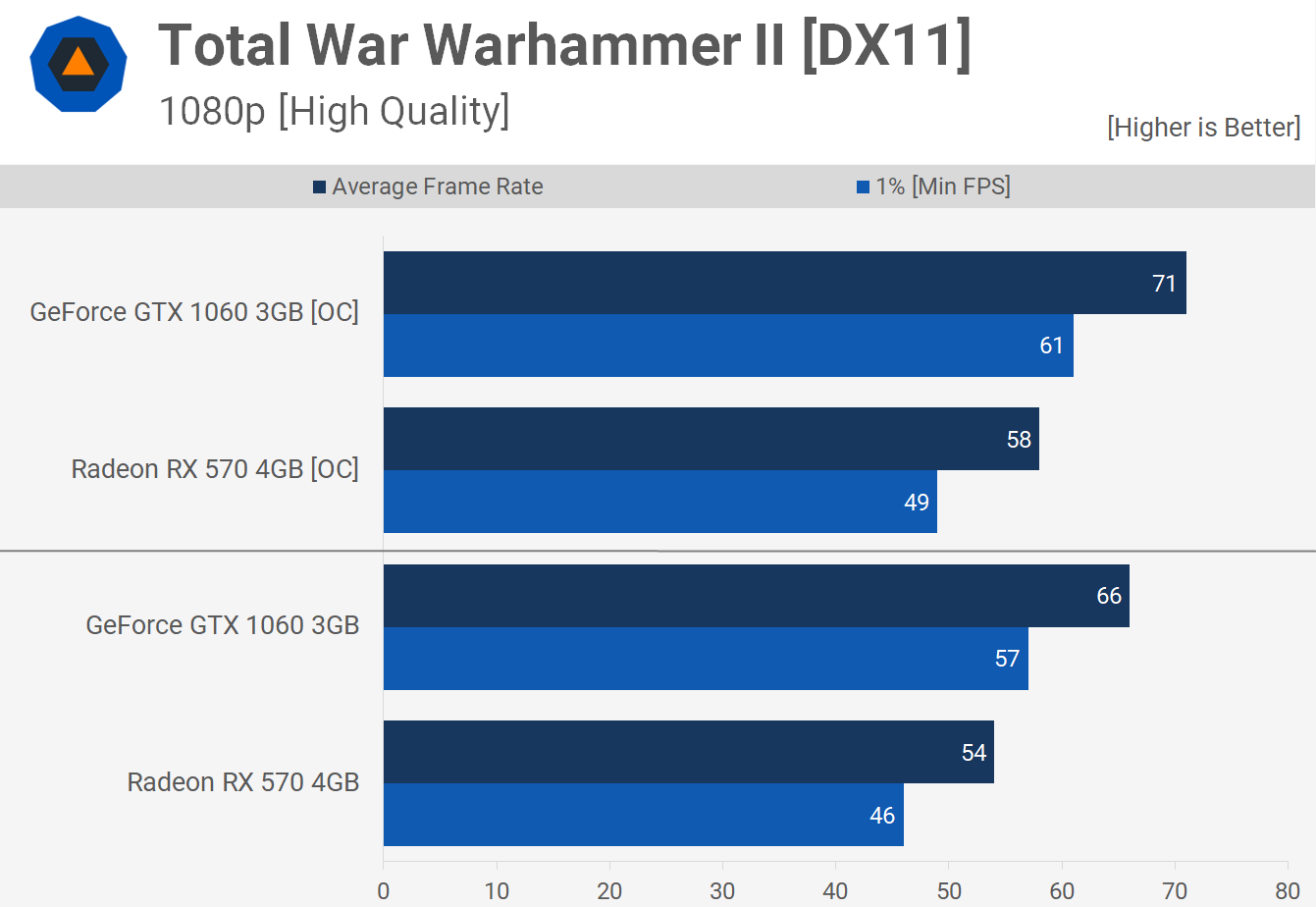
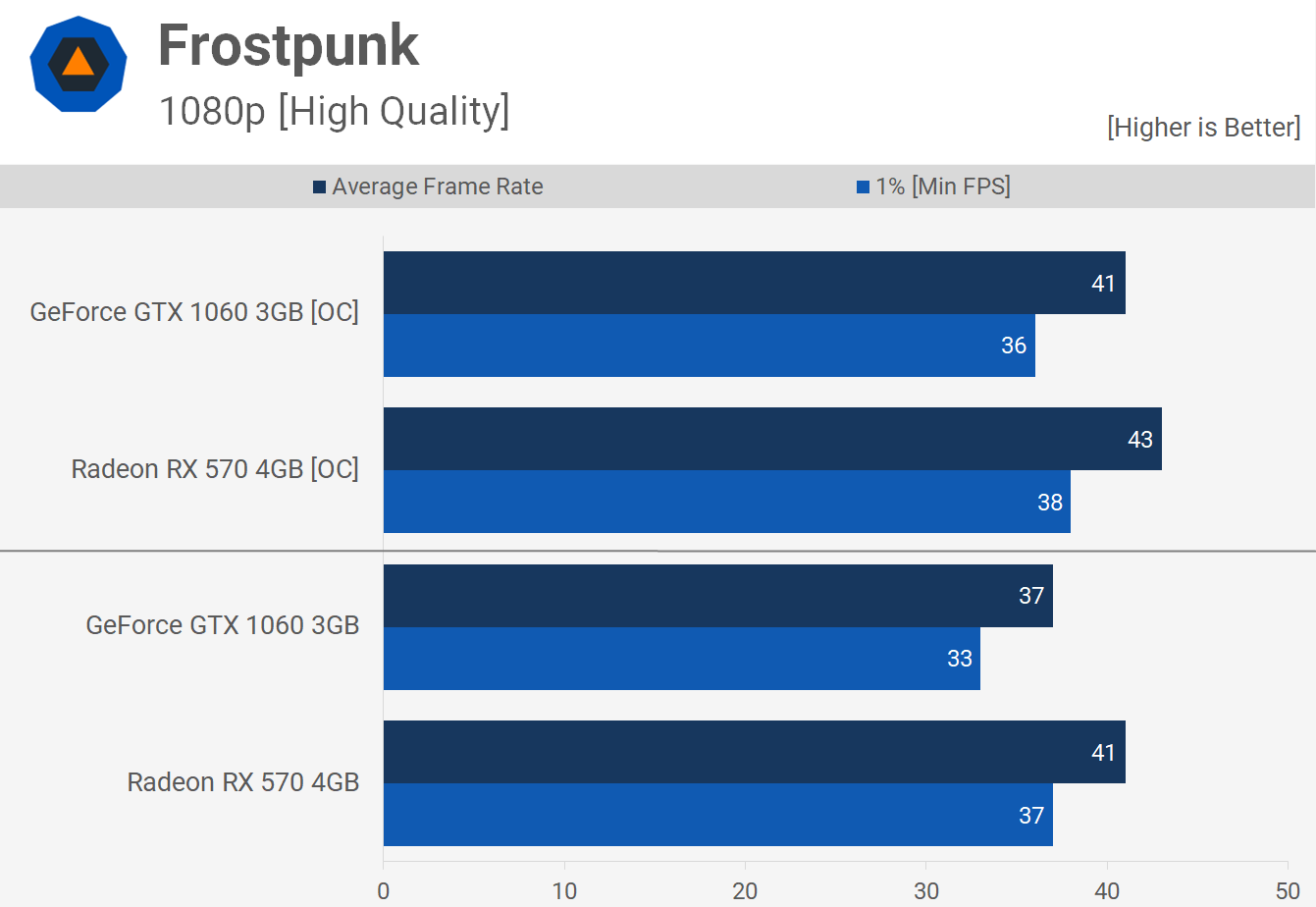

When it comes to power consumption the RX 570 does suck down a little more than the GTX 1060. It's at a disadvantage here being that the die is 16% larger so not that surprising we see a 19% increase in total system consumption. Still even when overclocked we're only seeing a system consumption of 332 watts and that includes a Core i7-8700K clocked at 5 GHz, so with a lower end CPU it's unlikely you'll see total system consumption climb above 300 watts.
Summary
Now let's get the full picture by looking at the results across all 27 games. Stock out of the box the GTX 1060 3GB was on average 4% faster than the RX 570. Not a big margin, but it has grown by a few percent since we last compared the two, so the 3GB 1060 is still kicking along okay at 1080p.

The 1060 enjoyed solid wins in GTA V, Warhammer II, Assassin's Creed Origins and Battlefront II. It was less impressive when testing with Wreckfest and Rainbow Six Siege.

Then with both graphics cards overclocked the GTX 1060 3GB extended its lead out to 8% and was now able to deliver considerably more performance in 6 of the titles tested, providing 20% more frames. Loses in titles such as Wreckfest and Rainbow Six Siege were also reduced. So if you plan on manually overclocking your graphics card the GTX 1060 is very attractive and because it consumes less power it also runs a little cooler as well, though temperatures will vary quite a bit from one model to the next so we won't go into that data here.
Closing Thoughts
So which one of these GPUs should you buy? Depending on the games you play, one model might be a better choice than the other. Overall though the experience was very similar in almost every title tested. Last time I said there was no right or wrong choice here, they're just too close to call it, so get whichever is less expensive.
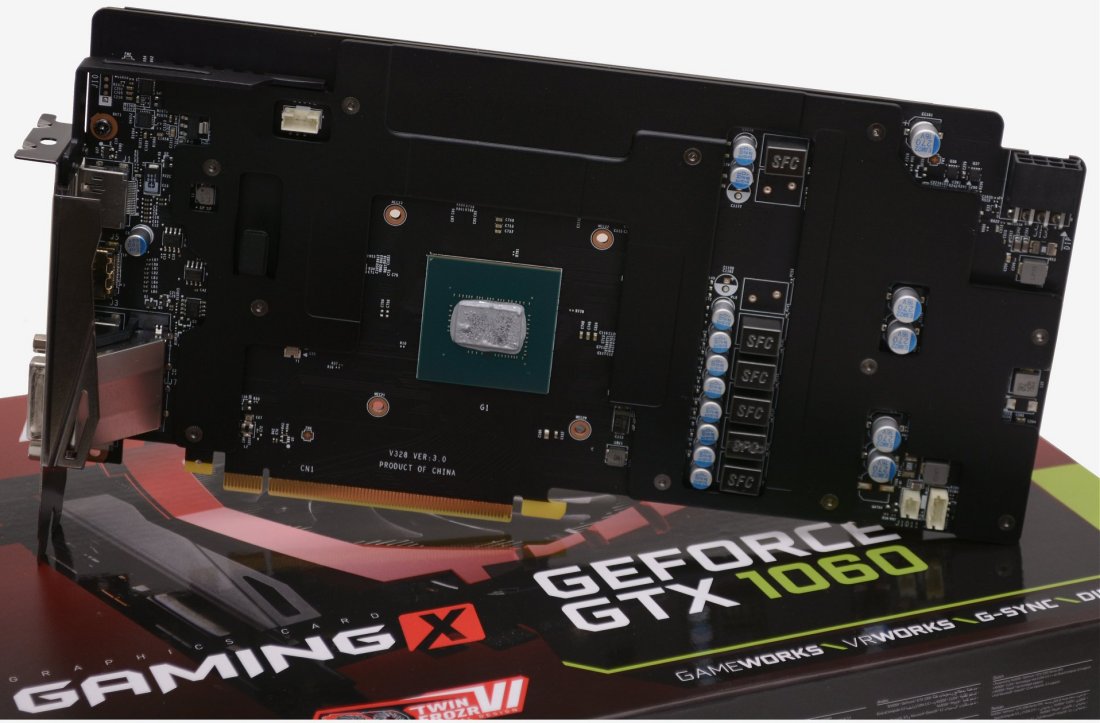
Having said all that, I personally gravitate towards the GTX 1060 3GB for a few reasons. Although I'm not happy about the 3GB naming – it's not merely a GTX 1060 6GB with half the memory, it's missing an SM unit taking the CUDA core count from 1280 down to 1152 – so in spite of having the same name, it actually features 10% fewer cores. But that doesn't change the fact that the 3GB 1060 is actually still a really good value product.
Right now the GeForce is also slightly cheaper than the RX 570 while offering slightly better performance. So if I had a little over $200 to spend on a graphics card, that's what I'd be getting right now.
If you can afford to pony up the extra $50 or so for the fully fledged 6GB model then by all means do so, but at 1080p there's no chance you're going to see 20% more performance, so in terms of cost per frame the 3GB version offers much more value.
Finally, if you want to take advantage of adaptive sync technology on a budget, then the RX 570 makes more sense as FreeSync is more affordable, but the experience will vary from display to display so make sure you do your research there.

